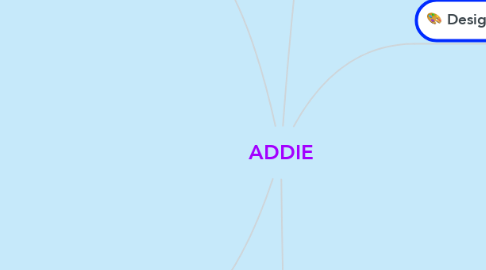
1. Implementation
1.1. In this phase the Instructional Designer works with training facilitators who will deliver course curriculum. Learning outcomes, method of delivery and testing procedures, training the trainer on use of technology platforms will also take place.
1.1.1. Content is taught/shared with end users by uploading content to an LMS, website, or other delivery options
1.1.2. Scheduling is completed and users are enrolled in classes (pass/fail or other grading requirements are put into place)
1.1.3. A pilot class is conducted when possible before rolling out the training to a larger network
1.1.3.1. The Instructional Designer monitors for any issues and opportunities for adjustment to curriculum before a larger 'go live' to a bigger audience
1.1.4. The training space is secured and technology is set up and tested
1.1.5. Feedback on all aspects of the training is collected from end users via some type of survey or evaluation tool with opportunity for open ended feedback
1.1.6. Workbooks, job aids and other visual aids are printed
1.1.7. Communications to all stakeholders are sent to notify of implementation timelines and goals
2. Evaluation
2.1. In this final phase of the process the Instructional Designer uses both formative and summative assessment data to evaluate the effectiveness of the design and quality of the training/curriculum. Formative evaluation is present at each stage of the ADDIE process. Evaluation guides the Designer in determining future enhancements and analysis of goals and objectives.
2.1.1. Exploration of changes/enhancements in media types or approaches are explored
2.1.2. Review of goals using reports are evaluated
2.1.3. Feedback is gathered and analyzed from surveys that often include open text elements for end users to give their thoughts and recommendations
2.1.4. Future training opportunities are explored
3. Design
3.1. During this phase the Instructional Designer should storyboard the proposed training using a tool such as PowerPoint to provide an overview of course design
3.1.1. Create an exercise example
3.1.2. Develop draft of preliminary content
3.1.3. Perform subject matter analysis
3.1.4. Select media
3.1.5. Draft sample lesson plan
3.1.6. Subject matter experts are engaged to assist with design that involves specialized workflows especially in the clinical setting
3.1.7. Define learning objectives
4. Development
4.1. In this phase the Instructional Designer assembles content, reviews contents, and revises curriculum according to feedback given
4.1.1. Create the coursework based on prototypes created in the design phase
4.1.2. Add levels of detail to the curriculum to make a polished and engaging end product - this includes adding colors, fonts, graphics, videos, music, etc.
4.1.3. Test navigation features; this is especially important if content is being accessed on multiple device types (i.e. iPad vs. laptop vs. views in other mobile devices like phone) and in multiple browsers
4.1.4. Review content from start to finish to determine flow from an end user perspective
4.1.5. Ensure engagement level (i.e. is there a blend of hands-on, instructor lead, audio, visual elements)
4.1.6. Create job aids and other supplementary materials to support learning
5. Analysis
5.1. During this initial phase of the Instructional Design process, the 'Who, What, Where, When, Why & How' are defined to determine the point of the training, why training is needed and what change is desired
5.1.1. Identify who the target audience is for the training
5.1.2. Get project buy in and feedback from all stakeholder groups that may be impacted
5.1.3. Establish learning objectives
5.1.4. Define end user knowledge and skill sets
5.1.5. Identify learning constraints
5.1.6. Identify delivery options
5.1.7. Determine learning environment
